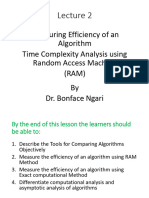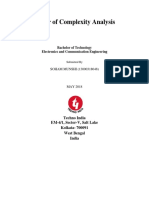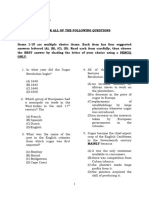0% found this document useful (0 votes)
34 views41 pages01 - Complexity Analysis of Algorithms
The document discusses the importance of complexity analysis in evaluating the efficiency of algorithms in terms of time and space. It emphasizes the need for machine-independent evaluation by counting basic operations and introduces Big-O notation for expressing asymptotic complexity. The document also provides examples of algorithm complexities and rules for determining the complexity of various code structures.
Uploaded by
NouredeenCopyright
© © All Rights Reserved
We take content rights seriously. If you suspect this is your content, claim it here.
Available Formats
Download as PDF, TXT or read online on Scribd
0% found this document useful (0 votes)
34 views41 pages01 - Complexity Analysis of Algorithms
The document discusses the importance of complexity analysis in evaluating the efficiency of algorithms in terms of time and space. It emphasizes the need for machine-independent evaluation by counting basic operations and introduces Big-O notation for expressing asymptotic complexity. The document also provides examples of algorithm complexities and rules for determining the complexity of various code structures.
Uploaded by
NouredeenCopyright
© © All Rights Reserved
We take content rights seriously. If you suspect this is your content, claim it here.
Available Formats
Download as PDF, TXT or read online on Scribd
/ 41































































































